
Amira Benhima
A passionate advocate for holistic wellness and natural beauty, is an accomplished author specializing in the benefits and uses of Argan oil, with years of experience exploring its wonders.
Key Takeaways
Have you ever stopped to consider the environmental impact of argan tree harvesting? While the argan tree is often celebrated for its valuable oil and its role in preserving biodiversity, there are also potential negative consequences to be aware of. From deforestation to soil erosion, loss of biodiversity to climate change, the consequences of improper farming practices and overharvesting can be far-reaching. In this discussion, we will explore the various ways in which argan tree harvesting can affect the environment, and the importance of sustainable practices to ensure the long-term survival of this valuable resource.- Deforestation and unsustainable harvesting practices of argan trees have a negative environmental impact.
- Loss of biodiversity and disruption of ecosystem balance result from habitat loss.
- Soil erosion and degradation are consequences of unsustainable harvesting practices.
- Climate change exacerbates environmental stress on argan trees, further impacting their habitat.
Deforestation
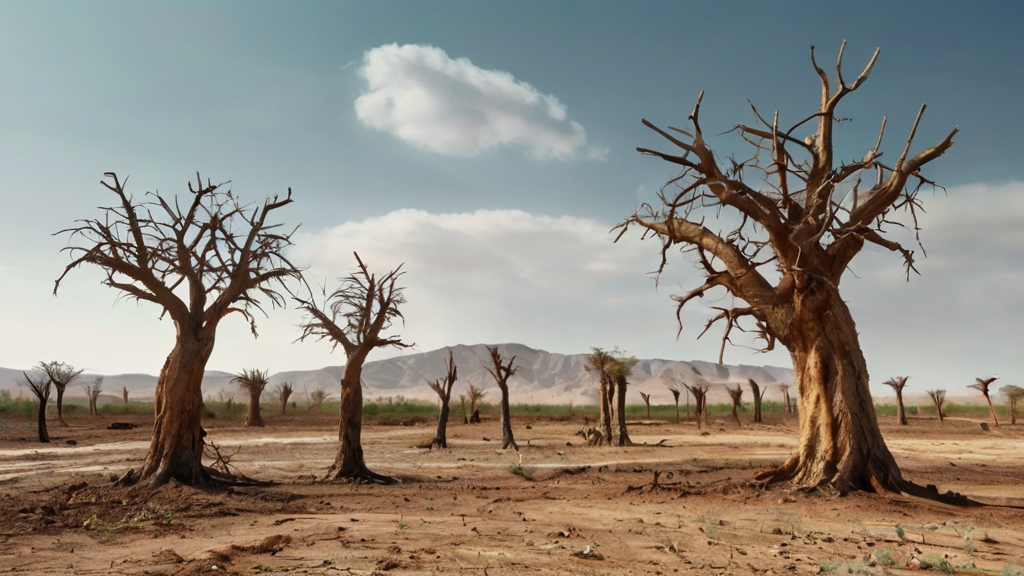 Deforestation caused by argan tree harvesting in Morocco contributes to the decline of argan forests and poses a significant threat to biodiversity and ecosystem stability. The overharvesting of argan trees for their valuable oil has led to habitat destruction and loss of biodiversity in the region. As the forests are cleared, the natural habitats of many plant and animal species are destroyed, causing a decline in their populations. This loss of biodiversity disrupts the delicate balance within the ecosystem, affecting the overall health and functioning of the argan region.
In addition to the loss of biodiversity, deforestation for argan tree harvesting also has negative impacts on soil stability and water retention. The extensive removal of trees destabilizes the soil, making it more prone to erosion. Without the protective cover of the trees, rainwater washes away the topsoil, leading to soil erosion and degradation. This has detrimental effects on the fertility of the land and hinders agricultural productivity in the area.
Furthermore, the disruption of the argan ecosystem through deforestation affects the water cycle and water availability in the region. The argan forests play a crucial role in water retention, acting as natural reservoirs that store and release water gradually, helping to regulate the flow of streams and rivers. With deforestation, this natural water regulation is disrupted, leading to increased water runoff, which can contribute to flooding and soil erosion downstream.
To mitigate the negative impacts of deforestation, it is essential to promote sustainable harvesting practices and protect the argan tree population. Implementing sustainable harvesting methods, such as selective cutting and reforestation efforts, can help to ensure the long-term health and viability of the argan forests. Additionally, establishing protected areas and enforcing regulations to limit deforestation will contribute to the conservation of this unique ecosystem and the preservation of its biodiversity.
Deforestation caused by argan tree harvesting in Morocco contributes to the decline of argan forests and poses a significant threat to biodiversity and ecosystem stability. The overharvesting of argan trees for their valuable oil has led to habitat destruction and loss of biodiversity in the region. As the forests are cleared, the natural habitats of many plant and animal species are destroyed, causing a decline in their populations. This loss of biodiversity disrupts the delicate balance within the ecosystem, affecting the overall health and functioning of the argan region.
In addition to the loss of biodiversity, deforestation for argan tree harvesting also has negative impacts on soil stability and water retention. The extensive removal of trees destabilizes the soil, making it more prone to erosion. Without the protective cover of the trees, rainwater washes away the topsoil, leading to soil erosion and degradation. This has detrimental effects on the fertility of the land and hinders agricultural productivity in the area.
Furthermore, the disruption of the argan ecosystem through deforestation affects the water cycle and water availability in the region. The argan forests play a crucial role in water retention, acting as natural reservoirs that store and release water gradually, helping to regulate the flow of streams and rivers. With deforestation, this natural water regulation is disrupted, leading to increased water runoff, which can contribute to flooding and soil erosion downstream.
To mitigate the negative impacts of deforestation, it is essential to promote sustainable harvesting practices and protect the argan tree population. Implementing sustainable harvesting methods, such as selective cutting and reforestation efforts, can help to ensure the long-term health and viability of the argan forests. Additionally, establishing protected areas and enforcing regulations to limit deforestation will contribute to the conservation of this unique ecosystem and the preservation of its biodiversity.
Soil Erosion
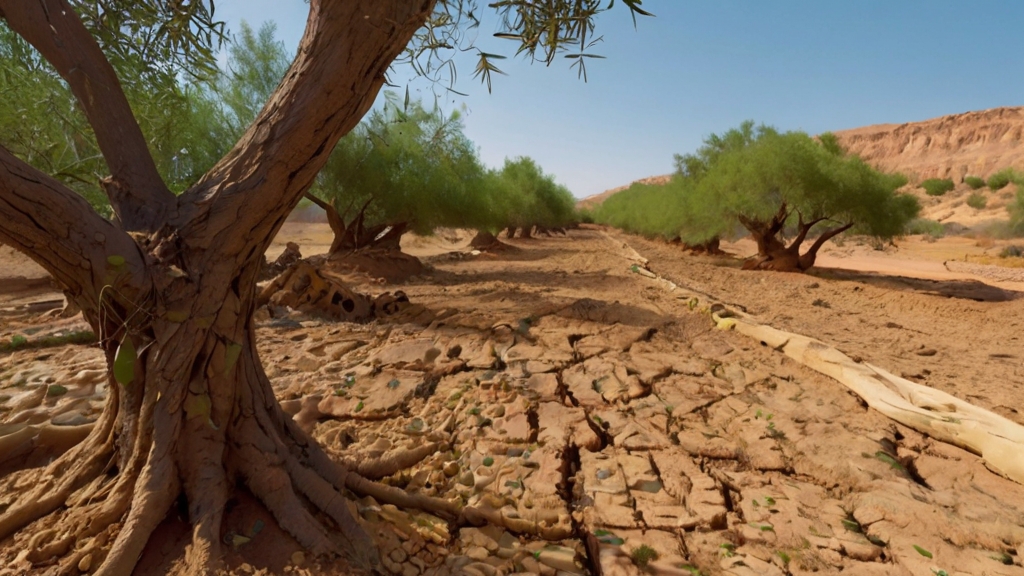 Soil erosion caused by the removal of argan trees can have detrimental effects on land productivity and soil quality. When argan trees are harvested, the loss of tree cover exposes the soil to wind and water erosion. This can lead to the loss of valuable topsoil, which is rich in nutrients and essential for plant growth. As a result, land productivity is greatly affected, making it difficult for farmers to sustain their livelihoods.
Moreover, soil erosion can also lead to nutrient depletion and reduced soil quality. The removal of argan trees disrupts the natural nutrient cycling process, as these trees play a crucial role in fixing nitrogen and enhancing soil fertility. Without proper conservation measures, the soil becomes depleted of essential nutrients, making it less suitable for agriculture.
Furthermore, soil erosion in argan-growing regions can contribute to desertification. As the topsoil is eroded, the land becomes increasingly arid, making it difficult for any vegetation to grow. This not only affects the local ecosystem but also exacerbates the impacts of climate change.
To mitigate the risks of soil erosion, sustainable harvesting practices and reforestation efforts are crucial. Implementing agroforestry systems, which combine the cultivation of argan trees with other crops or livestock, can help maintain tree cover and enhance soil stability. By integrating trees into agricultural practices, soil erosion can be minimized, and the overall health of the land can be improved.
Soil erosion caused by the removal of argan trees can have detrimental effects on land productivity and soil quality. When argan trees are harvested, the loss of tree cover exposes the soil to wind and water erosion. This can lead to the loss of valuable topsoil, which is rich in nutrients and essential for plant growth. As a result, land productivity is greatly affected, making it difficult for farmers to sustain their livelihoods.
Moreover, soil erosion can also lead to nutrient depletion and reduced soil quality. The removal of argan trees disrupts the natural nutrient cycling process, as these trees play a crucial role in fixing nitrogen and enhancing soil fertility. Without proper conservation measures, the soil becomes depleted of essential nutrients, making it less suitable for agriculture.
Furthermore, soil erosion in argan-growing regions can contribute to desertification. As the topsoil is eroded, the land becomes increasingly arid, making it difficult for any vegetation to grow. This not only affects the local ecosystem but also exacerbates the impacts of climate change.
To mitigate the risks of soil erosion, sustainable harvesting practices and reforestation efforts are crucial. Implementing agroforestry systems, which combine the cultivation of argan trees with other crops or livestock, can help maintain tree cover and enhance soil stability. By integrating trees into agricultural practices, soil erosion can be minimized, and the overall health of the land can be improved.
Loss of Biodiversity
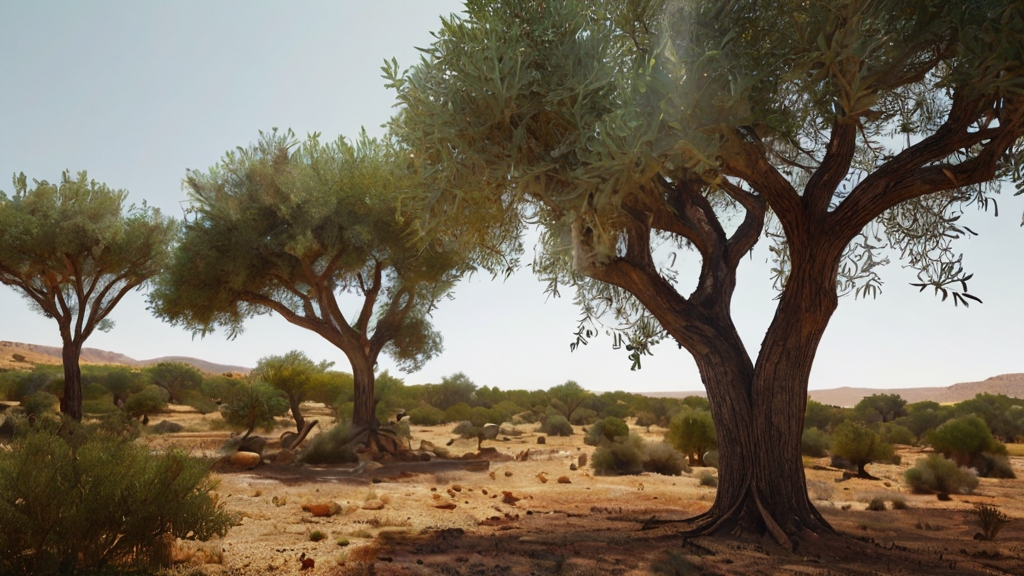 The loss of biodiversity due to argan tree harvesting is a significant concern. As species diversity declines, the delicate balance of the ecosystem is disrupted, leading to a range of negative impacts. Wildlife, in particular, faces threats as their food and shelter availability decreases. This loss of biodiversity can have far-reaching consequences, affecting the entire ecosystem and its stability.
The loss of biodiversity due to argan tree harvesting is a significant concern. As species diversity declines, the delicate balance of the ecosystem is disrupted, leading to a range of negative impacts. Wildlife, in particular, faces threats as their food and shelter availability decreases. This loss of biodiversity can have far-reaching consequences, affecting the entire ecosystem and its stability.
Declining Species Diversity
The declining species diversity within argan forests is a direct result of unsustainable harvesting practices. Overharvesting of argan trees for oil production has disrupted the delicate balance of the ecosystem, leading to a decrease in the number of plant and animal species. This loss of biodiversity is concerning as it affects the overall health and resilience of the ecosystem. With reduced species diversity, imbalances in the food chain and ecosystem functions may occur, further impacting the environment. To address this issue, conservation efforts are crucial in order to prevent further decline in species diversity caused by argan tree harvesting. By implementing sustainable practices and promoting the conservation of argan forests, we can help protect the ecosystem and ensure the preservation of biodiversity for future generations.Impact on Ecosystems
With the declining species diversity caused by unsustainable harvesting practices, the impact on ecosystems is evident in the loss of biodiversity within argan forests. The consequences of this loss are far-reaching and include habitat destruction, ecosystem disruption, and environmental degradation.- Habitat destruction: Deforestation for argan tree harvesting leads to the destruction of habitats, threatening the survival of many plant and animal species.
- Ecosystem disruption: The reduction of forest cover due to argan tree harvesting disrupts the natural balance and interdependence of species within the ecosystem.
- Environmental degradation: Overharvesting of argan trees can result in soil erosion, further exacerbating the loss of biodiversity.
Threats to Wildlife
Harvesting argan trees poses a significant threat to wildlife through the loss of biodiversity and habitat destruction. Deforestation for argan tree cultivation leads to the destruction of natural habitats, reducing the available space for various species to thrive. This habitat destruction disrupts the natural balance within the ecosystem, causing population declines and displacing wildlife from their homes. Endangered species that rely on the argan forests, such as the Barbary macaque, face heightened risks from the loss of their habitat. To mitigate these threats, conservation efforts are crucial. Protecting and preserving the diverse wildlife that depends on the argan tree ecosystem is essential to maintain the natural balance and prevent further population declines. Through these conservation efforts, we can minimize the impact of argan tree harvesting on wildlife and preserve the delicate balance of the ecosystem.Water Depletion
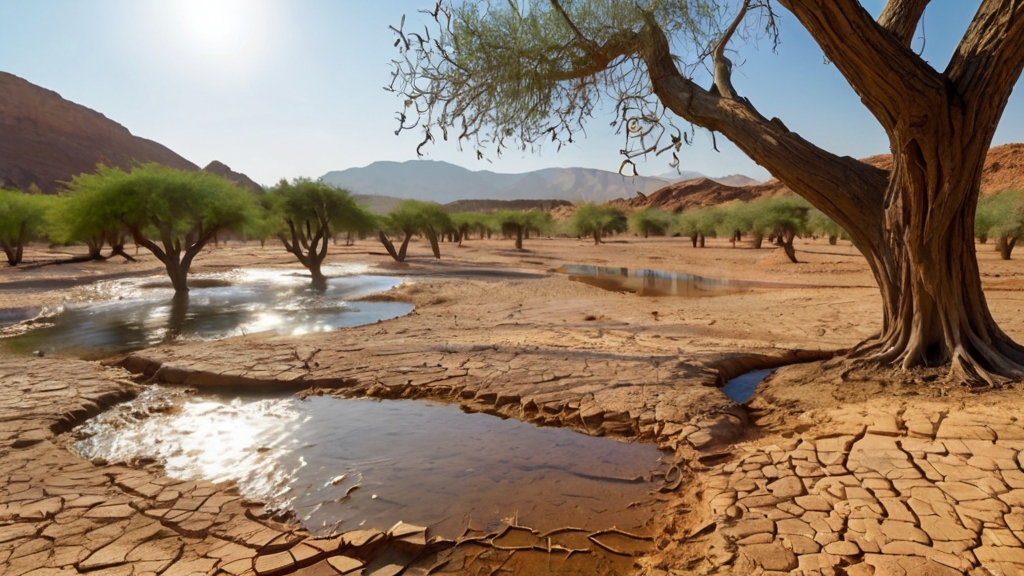 Argan tree harvesting exacerbates water scarcity in arid regions like Morocco by depleting groundwater levels through the deep taproots of the trees. This depletion of water resources can have a detrimental impact on the ecosystem and the communities that rely on them. Here are some important points to consider:
Argan tree harvesting exacerbates water scarcity in arid regions like Morocco by depleting groundwater levels through the deep taproots of the trees. This depletion of water resources can have a detrimental impact on the ecosystem and the communities that rely on them. Here are some important points to consider:
- Overharvesting of argan trees for their oil can disrupt the natural water cycle in arid ecosystems. The removal of these trees disturbs the balance of moisture in the soil, leading to reduced water infiltration and less groundwater recharge. This disruption can further contribute to water scarcity in already arid regions.
- Water resources are crucial for maintaining the health and sustainability of argan forests. These trees are deeply rooted and have adapted to arid conditions, relying on groundwater for survival. Depleting the groundwater levels can weaken the argan trees, making them more vulnerable to diseases and pests, which can ultimately lead to forest degradation.
- Sustainable harvesting practices are essential to mitigate the impact of argan tree harvesting on water resources. Implementing sustainable practices, such as selective harvesting and reforestation efforts, can help maintain the balance between argan tree harvesting and water availability. By ensuring that argan trees are harvested in a responsible and regulated manner, we can protect the water sources that sustain both the trees and the surrounding ecosystems.
Chemical Pollution
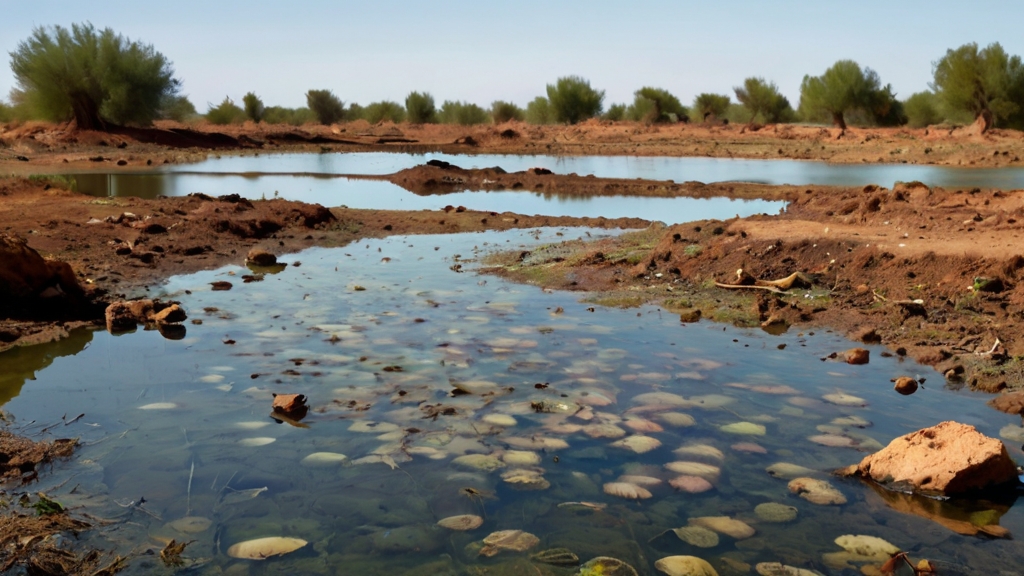 Chemical pollution resulting from conventional farming practices during the cultivation of argan trees can have significant environmental consequences. The use of pesticides and chemical fertilizers in argan tree harvesting can lead to contamination of the soil, water sources, and air. This contamination can have detrimental effects on soil health, biodiversity, and the overall balance of the ecosystem.
To better understand the impact of chemical pollution in argan tree harvesting, let’s take a look at the following table:
Chemical pollution resulting from conventional farming practices during the cultivation of argan trees can have significant environmental consequences. The use of pesticides and chemical fertilizers in argan tree harvesting can lead to contamination of the soil, water sources, and air. This contamination can have detrimental effects on soil health, biodiversity, and the overall balance of the ecosystem.
To better understand the impact of chemical pollution in argan tree harvesting, let’s take a look at the following table:
| Consequences of Chemical Pollution in Argan Tree Harvesting |
|---|
| Contamination of soil, water sources, and air |
| Damage to soil health |
| Negative impact on biodiversity |
| Disruption of ecosystem balance |
| Long-term environmental damage |
Disruption of Local Communities
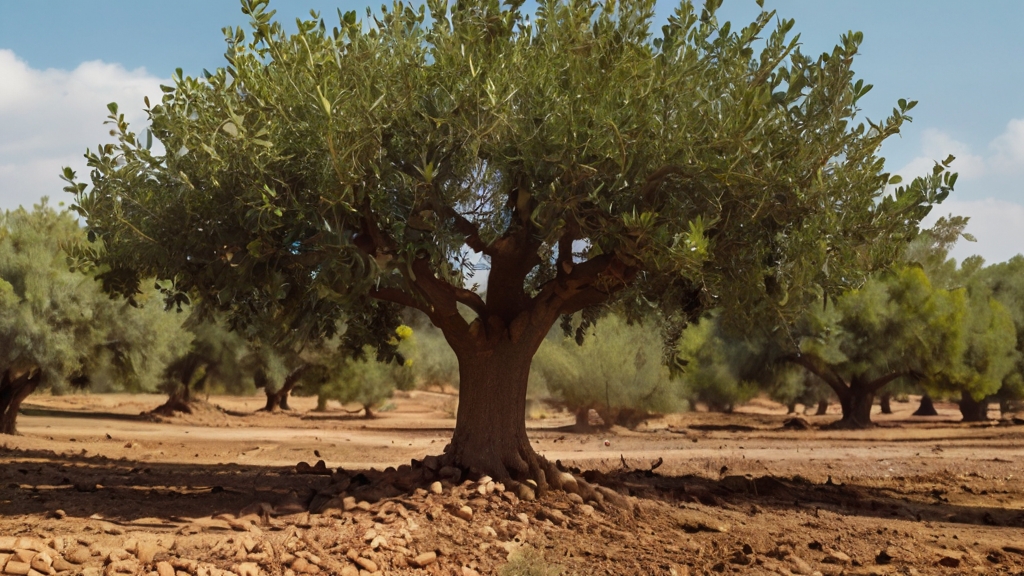 Disruption of local communities due to argan tree harvesting can have severe consequences. Community displacement is one such impact, as the overharvesting of argan trees can threaten the livelihoods of those who rely on them for income. This, in turn, leads to economic instability and potential cultural erosion, as the social fabric of these communities is disrupted.
Disruption of local communities due to argan tree harvesting can have severe consequences. Community displacement is one such impact, as the overharvesting of argan trees can threaten the livelihoods of those who rely on them for income. This, in turn, leads to economic instability and potential cultural erosion, as the social fabric of these communities is disrupted.
Community Displacement
The impact of argan tree harvesting on local communities becomes evident as their traditional way of life is upended. Community displacement is a significant consequence of this practice, as it disrupts the lives of those who depend on the argan trees for their livelihoods. Here are some key facts to consider regarding community displacement due to argan tree harvesting:- Land acquisition: The extraction of argan oil often leads to the acquisition of land, resulting in the displacement of communities living near argan forests.
- Commercial interests: In some cases, commercial interests prioritize argan tree harvesting over the needs of the local communities, exacerbating the problem of displacement.
- Social and economic challenges: Community displacement due to argan tree harvesting can lead to social and economic challenges for affected populations, as they struggle to adapt to their new circumstances.
Economic Instability
The economic instability of local communities heavily reliant on argan oil production is a direct outcome of the disruptive effects of argan tree harvesting. Unsustainable harvesting practices can lead to overharvesting, which in turn affects the livelihood of the people depending on argan oil as their main source of income. This economic instability is a result of the environmental impact caused by irresponsible harvesting methods. Families relying on argan oil sales suffer the consequences of dwindling resources and reduced income. To prevent further disruptions, it is crucial to implement responsible harvesting methods and promote sustainable practices. By doing so, local communities can ensure the long-term economic sustainability of argan oil production and protect the well-being of those whose livelihoods depend on it.| Unsustainable Harvesting | Economic Instability | Responsible Harvesting Methods |
|---|---|---|
| Overharvesting of argan trees | Loss of livelihood | Implementing sustainable practices |
| Dwindling resources | Reduced income | Protecting economic sustainability |
| Disruption of local communities | Impact on families | Promoting responsible harvesting |
| Environmental impact | Dependence on argan oil sales | Ensuring long-term stability |
| Jeopardizing economic sustainability | Unsustainable practices | Safeguarding community well-being |
Cultural Erosion
Argan tree harvesting in Morocco has had a significant impact on the cultural practices of local communities. The commercialization of argan oil production can disrupt the social structure and dynamics of these communities. Increased demand for argan oil may shift the focus of local economies away from traditional activities, leading to a potential erosion of cultural traditions. The involvement of external actors in the argan oil industry can also influence the cultural heritage and identity of local populations. Balancing economic opportunities from argan oil with the preservation of cultural traditions is crucial for sustainable development in the region. It is important to consider the environmental impact of argan tree harvesting alongside the social and cultural aspects, to ensure the long-term well-being of the local population and the preservation of their cultural heritage.Climate Change Impact
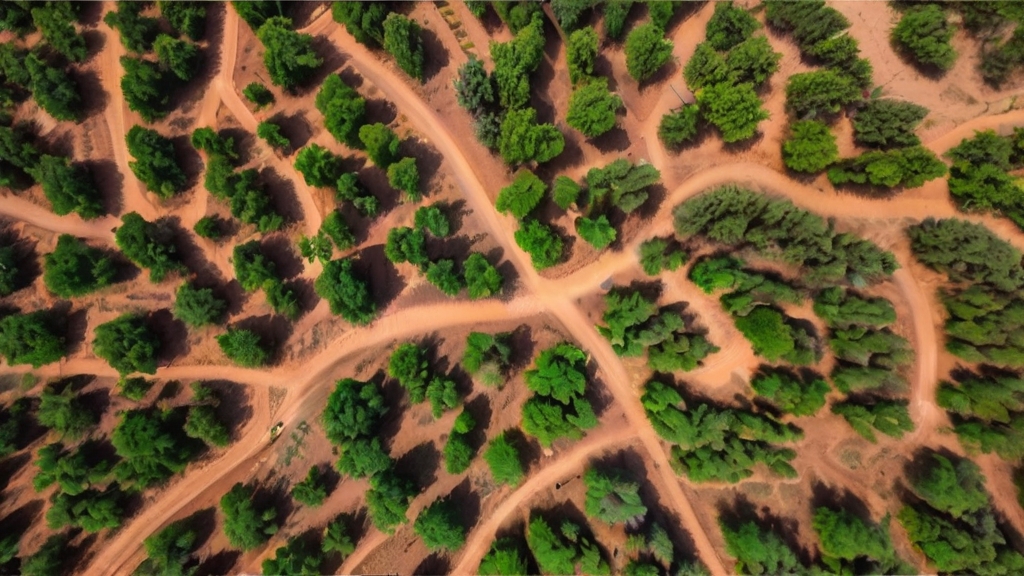 Climate change poses a significant threat to argan trees, impacting their natural distribution, growth, and sustainability. In Morocco, where argan trees thrive in arid regions, the effects of climate change are particularly pronounced. Drought conditions, exacerbated by climate change, have a detrimental impact on the natural distribution and growth of argan trees. As rainfall patterns become more erratic and scarce, argan trees struggle to survive in their traditional habitats.
Furthermore, soil degradation, also intensified by climate change, further compromises the ability of argan trees to thrive. The arid conditions coupled with soil erosion reduce the fertility and water-holding capacity of the soil, making it even more challenging for argan trees to establish and grow. This environmental impact not only affects the argan tree populations but also disrupts the delicate ecosystem they inhabit.
To mitigate the adverse effects of climate change on argan trees, sustainable strategies are crucial. Implementing measures such as reforestation, sustainable water management, and soil conservation can help protect and preserve the argan tree populations. Additionally, promoting awareness and education about the importance of argan trees in the ecosystem can encourage local communities and policymakers to take action.
Addressing the climate change impact on argan trees is not only essential for their survival but also for the well-being of the communities that rely on them. Argan trees provide various economic benefits, including the production of argan oil, which is widely used in culinary and cosmetic industries. Preserving the natural distribution and abundance of argan trees is vital for the sustainable development and long-term resilience of both the environment and the communities that depend on them.
Climate change poses a significant threat to argan trees, impacting their natural distribution, growth, and sustainability. In Morocco, where argan trees thrive in arid regions, the effects of climate change are particularly pronounced. Drought conditions, exacerbated by climate change, have a detrimental impact on the natural distribution and growth of argan trees. As rainfall patterns become more erratic and scarce, argan trees struggle to survive in their traditional habitats.
Furthermore, soil degradation, also intensified by climate change, further compromises the ability of argan trees to thrive. The arid conditions coupled with soil erosion reduce the fertility and water-holding capacity of the soil, making it even more challenging for argan trees to establish and grow. This environmental impact not only affects the argan tree populations but also disrupts the delicate ecosystem they inhabit.
To mitigate the adverse effects of climate change on argan trees, sustainable strategies are crucial. Implementing measures such as reforestation, sustainable water management, and soil conservation can help protect and preserve the argan tree populations. Additionally, promoting awareness and education about the importance of argan trees in the ecosystem can encourage local communities and policymakers to take action.
Addressing the climate change impact on argan trees is not only essential for their survival but also for the well-being of the communities that rely on them. Argan trees provide various economic benefits, including the production of argan oil, which is widely used in culinary and cosmetic industries. Preserving the natural distribution and abundance of argan trees is vital for the sustainable development and long-term resilience of both the environment and the communities that depend on them.
Frequently Asked Questions
Why Are Argan Trees Endangered?
Argan trees are endangered due to various causes such as habitat destruction, deforestation, and climate change impacts. The slow growth rate and limited distribution of argan trees make them particularly vulnerable. Conservation efforts are crucial to protect these trees and the unique ecosystem they support in Morocco. Argan trees have significant economic value, as they provide argan oil, which is widely used in cosmetics and culinary purposes. Protecting argan trees not only preserves their environmental benefits but also supports the local communities who depend on them.Why Is the Argan Tree Important?
The argan tree is important for various reasons. Its fruit produces valuable argan oil, known for its medicinal benefits and used in food, cosmetics, and medicine. The tree holds significant economic value, providing employment opportunities and contributing to the local economy. It has traditional uses in Moroccan culture and is a symbol of heritage. Conservation efforts are crucial to protect its unique ecosystem and combat desertification. Sustainable harvesting methods ensure the tree’s survival and preserve its nutritional properties, cultural significance, and role in biodiversity conservation.Is Argan Oil Vegan & Cruelty Free?
Yes, argan oil is vegan and cruelty-free. It is produced without involving animal testing or exploitation. Ethical sourcing practices, such as supporting small-scale women cooperatives and sustainable farming methods, ensure that the production of argan oil follows fair trade practices and promotes environmental preservation. By choosing argan oil products from reputable brands with certifications like Leaping Bunny or Beauty Without Bunnies, you can support vegan alternatives and contribute to animal rights activism. It’s important for consumers to be aware and make conscious choices to promote ethical and cruelty-free beauty products.How Has the Argan Tree Adapted to Survive in the Harsh Environment?
The argan tree has adapted to survive in harsh environments through various strategies. It conserves water by having deep roots that exploit water sources and closing its stomata during dry periods. Its unique root structure aids in water absorption and allows it to grow in different soil types. The tree has leaf adaptations that help it tolerate drought and maximize sunlight utilization. It also has effective reproduction strategies and nutrient absorption capabilities. Additionally, the argan tree exhibits pest resistance and climate resilience, making it well-suited to its environment.Related Articles
Traditional Argan Oil Uses by Natives
Discover the astonishing array of traditional Argan oil uses by natives, from culinary delights to medicinal wonders, that will leave you amazed and craving for more.
UV Absorption Rate of Argan Oil
Get ready to uncover the surprising truth about the UV absorption rate of Argan Oil, and how it could revolutionize your sun protection routine.
Berber Argan Oil Production Techniques
Discover the intricate 'P'rocesses behind Berber Argan oil production, and unravel the secrets to its exclusivity, cultural heritage preservation, and high value.


